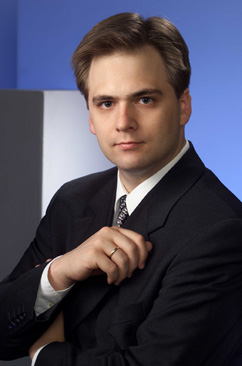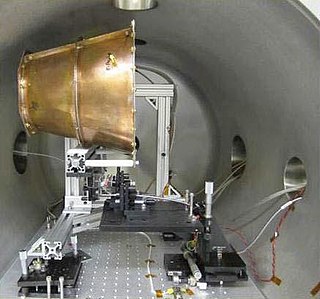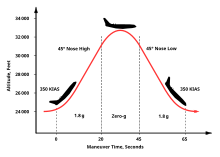
Spacecraft propulsion is any method used to accelerate spacecraft and artificial satellites. In-space propulsion exclusively deals with propulsion systems used in the vacuum of space and should not be confused with space launch or atmospheric entry.

A mass driver or electromagnetic catapult is a proposed method of non-rocket spacelaunch which would use a linear motor to accelerate and catapult payloads up to high speeds. Existing and contemplated mass drivers use coils of wire energized by electricity to make electromagnets, though a rotary mass driver has also been proposed. Sequential firing of a row of electromagnets accelerates the payload along a path. After leaving the path, the payload continues to move due to momentum.

A fusor is a device that uses an electric field to heat ions to a temperature in which they undergo nuclear fusion. The machine induces a potential difference between two metal cages, inside a vacuum. Positive ions fall down this voltage drop, building up speed. If they collide in the center, they can fuse. This is one kind of an inertial electrostatic confinement device – a branch of fusion research.

A tractor beam is a device that can attract one object to another from a distance. The concept originates in fiction: The term was coined by E. E. Smith in his novel Spacehounds of IPC (1931). Since the 1990s, technology and research have labored to make it a reality, and have had some success on a microscopic level. Less commonly, a similar beam that repels is known as a pressor beam or repulsor beam. Gravity impulse and gravity propulsion beams are traditionally areas of research from fringe physics that coincide with the concepts of tractor and repulsor beams.

A magnetohydrodynamic drive or MHD accelerator is a method for propelling vehicles using only electric and magnetic fields with no moving parts, accelerating an electrically conductive propellant with magnetohydrodynamics. The fluid is directed to the rear and as a reaction, the vehicle accelerates forward.
Thomas Townsend Brown was an American inventor whose research into odd electrical effects led him to believe he had discovered a connection between strong electric fields and gravity, a type of antigravity effect. Instead of being an antigravity force, what Brown observed has generally been attributed to electrohydrodynamics, the movement of charged particles that transfers their momentum to surrounding neutral particles in air, also called "ionic drift" or "ionic wind". For most of Brown's life he attempted to develop devices based on his ideas, trying to promote them for use by industry and the military. The phenomena came to be called the "Biefeld–Brown effect" and "electrogravitics".

Anti-gravity is a hypothetical phenomenon of creating a place or object that is free from the force of gravity. It does not refer to either the lack of weight under gravity experienced in free fall or orbit, or to balancing the force of gravity with some other force, such as electromagnetism and aerodynamic lift. Anti-gravity is a recurring concept in science fiction. Examples are the gravity blocking substance "Cavorite" in H. G. Wells's The First Men in the Moon and the Spindizzy machines in James Blish's Cities in Flight.

Inertial electrostatic confinement, or IEC, is a class of fusion power devices that use electric fields to confine the plasma rather than the more common approach using magnetic fields found in magnetic confinement fusion (MCF) designs. Most IEC devices directly accelerate their fuel to fusion conditions, thereby avoiding energy losses seen during the longer heating stages of MCF devices. In theory, this makes them more suitable for using alternative aneutronic fusion fuels, which offer a number of major practical benefits and makes IEC devices one of the more widely studied approaches to fusion.
Electromagnetic propulsion (EMP) is the principle of accelerating an object by the utilization of a flowing electrical current and magnetic fields. The electrical current is used to either create an opposing magnetic field, or to charge a field, which can then be repelled. When a current flows through a conductor in a magnetic field, an electromagnetic force known as a Lorentz force, pushes the conductor in a direction perpendicular to the conductor and the magnetic field. This repulsing force is what causes propulsion in a system designed to take advantage of the phenomenon. The term electromagnetic propulsion (EMP) can be described by its individual components: electromagnetic – using electricity to create a magnetic field, and propulsion – the process of propelling something. When a fluid is employed as the moving conductor, the propulsion may be termed magnetohydrodynamic drive. One key difference between EMP and propulsion achieved by electric motors is that the electrical energy used for EMP is not used to produce rotational energy for motion; though both use magnetic fields and a flowing electrical current.
Burkhard Heim was a German theoretical physicist known for the creation of a unified field theory called Heim theory. He was particularly interested in the application of his theory to the development of hyperspace travel.
Eugene Podkletnov is a Russian ceramics engineer known for his claims made in the 1990s of designing and demonstrating gravity shielding devices consisting of rotating discs constructed from ceramic superconducting materials.
The British Rail flying saucer, officially known simply as space vehicle, was a proposed interplanetary spacecraft designed by Charles Osmond Frederick. Although the proposed craft required controlled thermonuclear fusion and other futuristic technologies, a patent application was filed on behalf of British Rail in December 1970 and granted on 21 March 1973.
The term gravitational shielding refers to a hypothetical process of shielding an object from the influence of a gravitational field. Such processes, if they existed, would have the effect of reducing the weight of an object. The shape of the shielded region would be similar to a shadow from the gravitational shield. For example, the shape of the shielded region above a disk would be conical. The height of the cone's apex above the disk would vary directly with the height of the shielding disk above the Earth. Experimental evidence to date indicates that no such effect exists. Gravitational shielding is considered to be a violation of the equivalence principle and therefore inconsistent with both Newtonian theory and general relativity.
A reactionless drive is a hypothetical device producing motion without the exhaust of a propellant. A propellantless drive is not necessarily reactionless when it constitutes an open system interacting with external fields; but a reactionless drive is a particular case of a propellantless drive that is a closed system, presumably in contradiction with the law of conservation of momentum. Reactionless drives are often considered similar to a perpetual motion machine. The name comes from Newton's third law, often expressed as: "For every action, there is an equal and opposite reaction."

Martin Tajmar is a physicist and professor for Space Systems at the Dresden University of Technology. He has research interests in advanced space propulsion systems, FEEP thrusters, breakthrough propulsion physics and possible connections between gravity and superconductivity.

The EmDrive is a concept for a thruster for spacecraft, first written about in 2001. It is purported to generate thrust by reflecting microwaves inside the device, in a way that would violate the law of conservation of momentum and other laws of physics. The concept has at times been referred to as a resonant cavity thruster.
Mini-Mag Orion (MMO), or Miniature Magnetic Orion, is a proposed type of spacecraft propulsion based on the Project Orion nuclear propulsion system. The Mini-Mag Orion system achieves propulsion by compressing fissile material in a magnetic field, a Z-pinch, until fission occurs. This fission reaction propels the craft. MMO should be able to propel 100 tons to Mars within 3 months or to Jupiter in about one year.

The Ayaks is a hypersonic waverider aircraft program started in the Soviet Union and currently under development by the Hypersonic Systems Research Institute (HSRI) of Leninets Holding Company in Saint Petersburg, Russia.
American interest in "gravity control propulsion research" intensified during the early 1950s. Literature from that period used the terms anti-gravity, anti-gravitation, baricentric, counterbary, electrogravitics (eGrav), G-projects, gravitics, gravity control, and gravity propulsion. Their publicized goals were to discover and develop technologies and theories for the manipulation of gravity or gravity-like fields for propulsion. Although general relativity theory appeared to prohibit anti-gravity propulsion, several programs were funded to develop it through gravitation research from 1955 to 1974. The names of many contributors to general relativity and those of the golden age of general relativity have appeared among documents about the institutions that had served as the theoretical research components of those programs. Since its emergence in the 1950s, the existence of the related gravity control propulsion research has not been a subject of controversy for aerospace writers, critics, and conspiracy theory advocates alike, but their rationale, effectiveness, and longevity have been the objects of contested views.

Subrata Roy is an Indian-born American inventor, educator, and scientist known for his work in plasma-based flow control and plasma-based self-sterilizing technology. He is a professor of Mechanical and Aerospace Engineering at the University of Florida and the founding director of the Applied Physics Research Group at the University of Florida.














